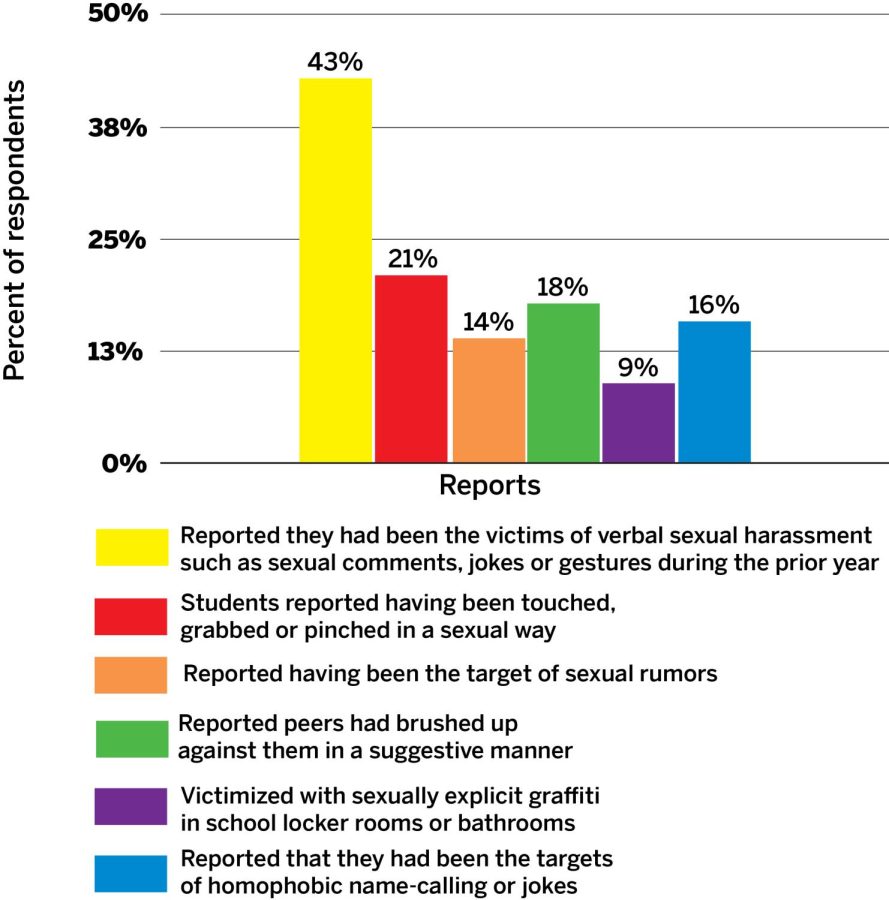Recognizing the signs of abuse and assault in the classroom
Information obtained from a study conducted by the University of Illinois at Urbana-Champaign. The 1,300-person, five-year study was published December 2016.
March 19, 2017
Over her 15 years of teaching, first grade teacher Lisa Bass said she has seen approximately nine cases of child abuse.
Bruises on the back of a student’s head from being pushed against the wall and bruises on arms where children said they were dragged up stairs are some scenarios Bass has encountered.
“Usually it starts with students confiding in me, or their work ethic and behavior is off,” Bass said. “When I start to notice these signs, I have a private, one-on-one meeting to sit down and figure out what is going on.”
At Kent State, education majors and faculty members have incorporated sexual assault and abuse education into the curriculum taught on campus in order to recognize the signs in the future.
Bass, also an adjunct professor at Kent State, said she asks her students where they live and what they like to do at the beginning of the semester.
“It’s important to know the background of your students,” Bass said. “It can help you get an idea of their enviornment outside of school, helping you be more aware if there is a shift in behavior.”
Senior special education major Kaitlyn Thissen said she learned to recognize signs of sexual abuse through just one lecture in her health and learning class.
“If I realize anything is going on at home, I want to address it as soon as possible,” Thissen said. “Even though they’re students with disabilities, they have emotions, and I think people forget that.”
Thissen said in her classes, professors go over examples and scenarios to help recognize changes in student behavior that hint at issues happening at home.
Working at Imagine Leadership Academy in inner city Akron, Thissen said she knows some of her students come from rough home lives. Keeping the kids her top priority, she said she wants to ensure they’re in a safe environment.
“It’s tough because a lot of students I teach are nonverbal,” Thissen said. “Keeping an eye on their emotions, physical bruises and how they are acting is key.”
As a resident assistant, senior integrated language arts major Chelsea Bartman said she had to go through Green Dot training.
“Green Dot training is not something required for education majors, but I definitely think it should be,” Bartman said. “It’s an issue we don’t touch on much, and I think there should be some formal training.”
Bartman said her resident assistant background helped her prepare for student teaching at Milkovich Middle School in Maple Heights.
“I was pretty fortunate to have the background as a resident assistant,” Bartman said. “I think the education program here does all they can to cover all topics, but as far as sexual assault — it’s just not something we really go into.”
Sophomore early childhood education major Sydney Yannuzzo said she was required to take a child safety class before she began student teaching.
“A big thing the teacher stressed was that, when a student asks you to talk, you drop everything you’re doing and talk to them,” Yannuzzo said. “It takes a lot of guts for a student to ask to talk.”
The one-day session talked about how teachers always need to be aware of their students and be able to tell if they’re acting different. Yanuzzo said they stressed the importance of mandatory reporting, meaning all teachers must report an incident if a student confides in them about abuse.
Stephanie Orwick, the support service coordinator for the Office of Sexual and Relationship Violence Support Services, said teachers can sometimes forget to take care of themselves when dealing with a student’s trauma.
“People can sometimes get really invested and it could possibly trigger unpleasant emotions or memories,” Orwick said. “Especially when you’re in a caring role, like a teacher or counselor, and always putting someone else’s needs first.”
Orwick, a clinical licensed counselor with experience in trauma and crisis centers, occasionally fills in for professors to teach about consent, partner violence, sexual assault and any other topic students may be interested in learning about.
“Things change so often,” Orwick said. “Even if it’s not a full course, touching on these subjects every so often would help remind future teachers about these issues.”
When she got her job, Bass said she was required to become certified in child abuse awareness.
“Every teacher has to get certified when they get their first job,” Bass said. “It has helped me recognize abuse in the classroom and instill trust with my students so they open up to me.”
In the case that a teacher does find out abuse is happening, Bass said he or she is required to report it. If the allegations are verified, Child Protective Services will step in to investigate and may possibly remove the child from the home.
Hannah Wagner is the education, health and human services reporter, contact her at [email protected].












